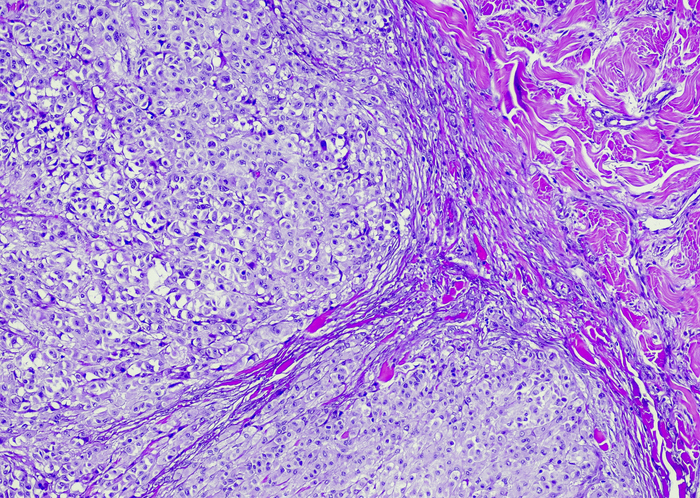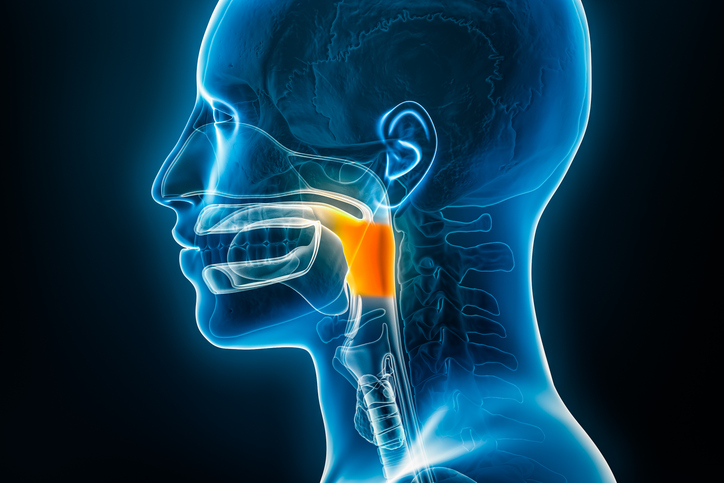Dr. Shalini Singh: Diagnostic for Metastatic Breast Cancer Patients with Low HER2 Expression
By Patrick Daly - Last Updated: April 27, 2023In this interview, DocWire News spoke to Shalini Singh, MD, Chief Medical Partner Oncology Network who currently serves on the Clinical Development and Medical Affairs leadership team at Roche Diagnostics Solutions. Dr. Singh discussed the FDA approval of the PATHWAY anti-HER2(4B5) test from Roche Diagnostics, which identifies metastatic breast cancer patients with low HER2 expression.
DocWire News: HER2 Expression in Breast Cancer
Dr. Shalini Singh: Absolutely pleasure to be here. But before we start, I would like to give you a little bit an overview of it. As you already know, breast cancer is the second most common cancer in the world, and nearly every year, 2.1 million people are diagnosed worldwide. And also, I’ll say around 600,000 people, they die from this disease. So out of all the breast cancer, around 15 to 20% are HER2-positive. And since so many years we have a drugs. The first one was Herceptin in 1998, and we have got additional drugs which can treat this HER2-positive population. And there’s been tremendous progress in the overall survival for these women.
However, 40 to 50% of the people are women. They have low expressions of HER2. And obviously, up to now, there was no personalized medicine for that or targeted treatment. And these people were given standard of care like chemotherapy or hormone [inaudible 00:01:11] depending on their status. So there’s a huge unmet medical need in this population, and that’s why I think Roche, along with pharma partners, we have a companion diagnostics and we worked on this because it was such a huge need for our women also.
What motivated the development of the PATHWAY anti-HER2(4B5) test?
So as I mentioned before, there was a huge unmet medical need. So the test is exactly the same. And what we have done is we have expanded the capability of this test and broadened the scope, so that now we can also test HER2-low women, and they can be given a targeted therapy. So that’s where we came for, that was the whole motivation that how can we ensure that? And for that, what we had to do was standardize the test, make sure what the instrument detection and everything was there, so that every time when this test is run for HER2-low negative women, it is reproducible and accurate, and so that was a whole motivation behind this.
How is the test performed and how does it identify patients with low expression?
So the test, how it’s performed is basically what you have to have, make sure that the protocol is locked and we have the instrument and detection kit, so all that is a package. Along with that, then this test is done on the patient and along with it, what is also very important is that how can the pathologist then read this assay? So that was a training which we have right now, and we may ensure that every time the pathologist can read it accurately also. While we were developing the test and why we standardize this so that we can detect the expression of HER2 across all four categories from 0, 1+, 2+, and 3+, and that way we can get accurate results. In the past, HER2 was only HER2-positive or negative. There was no differentiation between negative, positive, and HER2-low. And that’s where we have been focusing on.
What were the major findings of the trial?
I think that was one of what we submitted to the FDA, so our approval was there. We had a randomized control trial. One arm was standard of care, and one arm was with the drug, which is in HER2. And what we observed, and what we found out was that the overall progressions free survival and overall survival in these women was double than the standard of care. So as was said before, that this was a huge unmet medical need. How can these women, if they’re just given routine stuff versus this drug, they will be eligible for this therapy. And another thing was there approximately, I think 49% reduction in the risk of progression of the disease in these women if they were on this drug also. So that was what was very valuable, and that’s why we got the approval also.
What are the differences between HER2-targeted and conventional HER2-negative treatments?
So basically, like HER2 targeted therapy, it is basically, the HER2 protein is there. It is expressed on the tumor cell. So these therapies are very specific for that. But if the patient, up until now, if it is negative for HER2-positive. HER2-positive is defined, it is always defined by either there is protein expression, which is 3+ and 2+s, protein expression plus gene amplification. So when that happened that women were given this targeted Herceptin, Cadila, all those drugs which were there. And we never had anything between 1+, which is the specific definition about membrane intensity and cutoff, and 2+ without gene amplification. So that’s where this targeted piece is coming and is going to help women a lot in that direction also.
How many more patients might meet the lower cutoff for HER2-low status?
So as I mentioned before, approximately 40 to 50% of the women, they had this low expression of HER2, which was never treated before because there was no drug which could show its efficacy. So all these women, they’ll now be illegible for therapy with this new drug, which is a huge, huge unmet need. And overall for women, it is absolutely phenomenal that they may be eligible for this therapy.
How can the test be implemented by health care providers?
I think this test is exactly the same as it was before, except we have standardized it, and training is there, so healthcare providers, they can easily access with our test. If you have to give treatment for HER2-low, this is the only FDA approved test, and so they have to make sure that this test is run. And this is easily available and they’re already using, if they’re using our test before it’s already there, so there won’t be that much of difference as where access is concerned. But it can be used now along with HER2-positive also for HER2-low patients also.
Is there any other research on breast cancer you’d like to highlight?
One comment, according to the latest data, is every 15 seconds a woman is diagnosed with breast cancer. So as you can imagine, it’s such a huge population out there which we can help. And Roche has always been innovative in looking into breast cancer. Along with that, also in general for women’s health also. And another thing is what we could also look at is, how can this test can be used in other solid tumors also? What are the avenues? So I think that’s another innovation that is happening.







 © 2025 Mashup Media, LLC, a Formedics Property. All Rights Reserved.
© 2025 Mashup Media, LLC, a Formedics Property. All Rights Reserved.